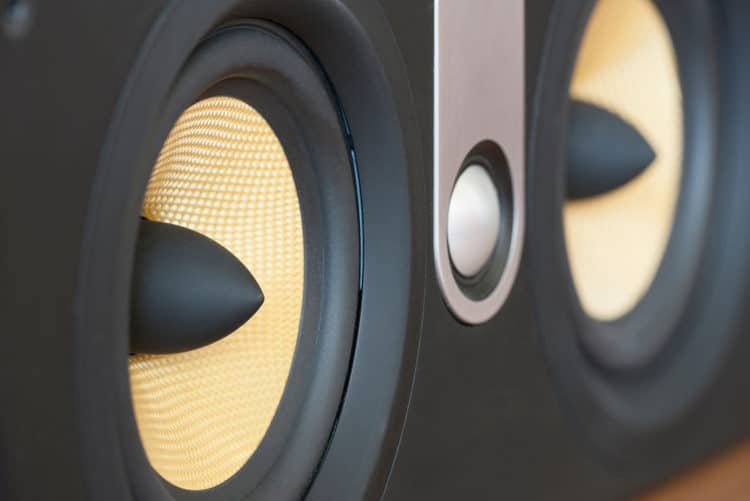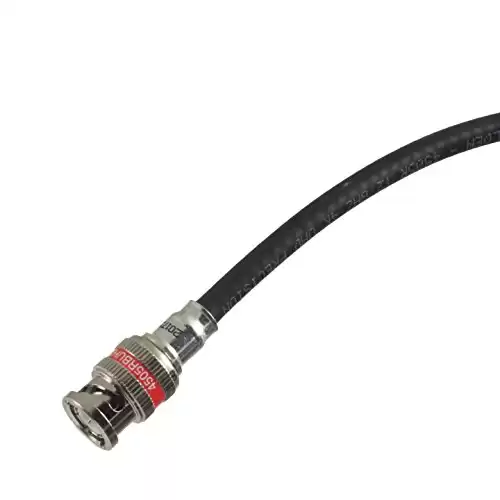Blue Jeans Cable is a Seattle-based business specializing in producing high-quality audiophile cabling for audio equipment. The company is located between Magnolia and Queen Anne, employing a handful of workers as a small business to create their unique product.
This company is a small business success story. Founded in 2002, the husband and wife team began by assembling cables in their dining room.
As people began to experience the audio differences that Blue Jeans Cable creates, they were able to expand their business footprint until eventually settling into their work.
Blue Jeans Cables: The Secret to Audiophile Success?
Blue Jeans Cables provide one of the lowest capacitance ratings in the audio industry today. At 12.2 pF per foot, this brand delivers an affordable way to embrace audiophile listening experiences without needing to keep the interconnects as short as possible. The LC-1 interconnects use 25-gauge bare copper with double-braided shields to create results.
When you want to improve your listening experience at home, you’ll need to consider the capacitance, resistance, and inductance of your selected cabling. There are times when these measurements matter and when they don’t, and it’s usually different for each home theater or audio station setup.
If you’re trying to improve your rig right now, here are the four key points you’ll want to review while looking for solutions.
- Resistance is an irrelevant measurement for interconnects and speaker cables.
- You need to know what the capacitance is for the interconnects. Inductance only matters if the ratings are extraordinarily high.
- Speaker cables should focus on inductance ratings to achieve a better result. Capacitance isn’t relevant unless the ratings are high.
- If your connection is less than three feet, almost any cabling will work. It’s when you’re at six feet or longer that you’ll need to look at cable quality to ensure the sound meets or exceeds your expectations.
The biggest issue that the audiophile market faces when buying cables involves consistency. Unless sourcing agents in China and Southeast Asia are on the factory floor 24/7 to supervise the assembly work, you’re playing a game of Russian roulette with each cable purchase.
You don’t have that problem with Blue Jeans Cable. The products are all assembled in the United States in the company’s shop whenever possible. Although it would be a little cheaper to job the work out overseas instead of doing it in Seattle, they wouldn’t receive as much consistency.
Most audiophile cable companies have their assemblies manufactured overseas, whereas Blue Jeans Cable has the technical expertise to produce what they need at home.
Even when you need cabling that the company can’t do at home, they’ll outsource the work to American agencies whenever possible.
As a last resort, Blue Jeans Cable sends American components to Chinese factories to create their stock.
Can Blue Jeans Cable Stop My Subwoofer Hum?
A great subwoofer delivers more power and energy to any home theater system. Having an authentic reproduction of the lower frequencies in the audio spectrum creates a realistic listening experience.
The issue that you’ll find at home is that the AC power lines produce a 60-cycle hum. Although this problem would never get into the signal path in a perfect world, we don’t live in one.
That means you can end up with that hum in your subwoofer, creating a loud result that isn’t that pleasant.
Many people take a brute force method by using filters to remove it, but some parts of a bass audio signal are in that 60 Hz range. That means you’re losing out on a portion of the listening experience.
The only way to remove the unwanted hum without throwing away some of the desired audio is to understand what causes the problem.
What Causes a Subwoofer to Start Humming?
When you get an unwanted hum with a subwoofer in your home theater system, it is likely caused by one of these four issues.
- A powered subwoofer has an electrical defect.
- Induced noise is present in the audio signal path, often around the cables.
- Ground loop noise is present because of a different ground potential at the receiver and subwoofer.
- Noise comes from other components upstream of the subwoofer.
The problem you’ll encounter here is that the solutions that solve one problem won’t solve them all. Multiple factors may contribute to the unwanted humming, which is why you’ve got to keep trying if the first effort doesn’t solve the problem.
Some subwoofer humming comes from the unit. Any device that reproduces audio and runs off regular AC power must convert the energy to DV voltages while protecting the audio circuitry from the power supply.
Some humming will happen if an internal failure occurs during one of these steps. You can detect this problem by disconnecting the unit from everything but the power source.
Some humming from a subwoofer is induced from the surrounding audio system. When it is in the proximity of other cables or power circuits without appropriate shielding, you’ll end up with this interference.
With Blue Jeans Cable products, you can get better routing courses because of the lower impedance offered.
Shielding plays a significant role here. If you have foil cables, you should upgrade to braiding to reduce or eliminate the hum.
What About the Ground Loop Issue?
Ground loop current flows are less common than internal faults or filter failures, but it is still an option that needs to be checked if you’ve got significant subwoofer humming. This problem occurs when differences exist in the ground potential between different equipment pieces. That causes a small current to flow along the lines that connect them.
When that flow happens in an unbalanced circuit in the signal path, it’ll get amplified like it was part of the original signal.
Ground loop problems are often fixable without throwing money at them. You need to have all the grounds throughout your gear to have the same potential.
That means you can often solve the problem by having everything plugged into the same power circuit. You might need to upgrade to a three-wire, earth-grounded circuit instead of using the ungrounded options found in older homes.
If your home wiring has severe grounding issues, you’ll need an electrician to help you solve the problem.
Some ground loop problems need a distinct approach because the equipment for home theaters uses a pseudo-ground tied through resistance at the neutral side of the circuit. Those arrangements require a different solution, such as a subwoofer isolation transformer.
What Upstream Issues Cause Unwanted Humming?
When you’ve tried the other methods of eliminating hum without success, you likely have an upstream issue to rectify. Internal electrical defects and ground loops can occur anywhere within your system.
If the hum only happens when you switch to a specific source, that information lets you know where the problem exists.
When you don’t get this indication, try unplugging all sources from the receiver before introducing them again, one at a time. Once you get the unwanted feedback, you’ll have the potential culprit.
Once you’ve figured out these elements and upgraded your cables as needed, you’ll finally get the silence you need from the subwoofer.
Do the Wall Plates Affect My Sound?
Audio and video wall plates don’t alter the sound profile you’ll experience through your sound system. They provide a simple, clean, and professional installation experience when cables require wall routing.
Instead of settling for inconsistent sizing from a big-box retailer, Blue Jeans Cable creates two plate configurations based on the U.S. and U.K. installs.
You can choose the coupler style where a fixed HDMI jack exists or a pigtail option where the in-wall side uses a short cable length for some extra flexibility.
Blank keystone-insert wall plates are available from Blue Jeans Cable, along with RCAs, F-connectors, BNCs, and more.
Best Blue Jeans Cable to Buy
When you look at the extensive inventory offered by Blue Jeans Cable, you’ll find something that meets virtually any need.
I’m a big fan of their 12G SDI cable. It’s made with Belden 4505R, coming in lengths from 10 to 100 feet, and assembled in the United States. You’ll find that it is backward compatible with all the other SDI standards.
Everything becomes critical when you start dealing with higher frequencies. As the wavelengths get shorter, the impedance mismatches can be problematic.
By revisiting how the 1505A cables perform, Blue Jeans Cable created a one-piece BNC that’s a perfect fit for those that love to use coax.
The 12G SDI cable has the duo-foil bonded to the dielectric to improve the cable’s performance under flexion.
When you take a peek at the assembly, you’ll see that it comes with a silver-plated copper center conductor.
That’s surrounded by PE foam dielectric, a foil-braid combo for shielding, and a PVC jacket. They’ve even taken a new approach to the braiding angle to create periodicity improvements.
It’s rated CMR for installation, offering male BNC connectors at both ends. You can run the cable up to 155 feet for your installation.
It Looks Like a 50-Ohm BNC on the Cable?
Blue Jeans Cable has an arrangement with Belden to have a unique 75-ohm BNC attached to this 12G SDI cable. Although it looks like there’s a bit of dielectric inside the outer contact, you’ll receive the impedance that you need for your listening experience.
I’ve passed a 12G signal over the cable’s length without a noticeable dropout for hours on end. It works well with my 4K 120 FPS and has never let me down. The cabling also does an excellent job for live streaming options.
It’s easy to overlook the support that cables deliver for your system. When you invest in Blue Jeans Cable products, you can stop worrying about the results your setup produces.
I highly recommend the entire Blue Jeans Cable lineup for your home theater or audiophile listening needs.


